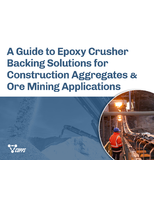ASTM Standard facilitates roadwheel test equivalency for tires.
Press Release Summary:
Developed by Subcommittee F09.30 on Laboratory (Non-Vehicular) Testing, ASTM F2779 describes procedures of using flat-to-curved surface prediction profiler to identify equivalent test severity conditions on 1.707 m dia laboratory roadwheel from specific flat or highway operating conditions for Load Range F-L tires used on vehicles with gross weight greater than 4,536 kg. Additionally, standard also describes curved-to-flat surface prediction profiler.
Original Press Release:
New ASTM Standard will Facilitate Roadwheel Test Equivalency for Truck and Bus Tires
W. CONSHOHOCKEN, Pa.-The purpose of a laboratory roadwheel test is to realistically evaluate tires for specific road conditions. To facilitate such tests, ASTM International Committee F09 on Tires has developed a practice to provide an industry standard for commercial radial truck-bus tire laboratory temperature algorithms. The algorithms equilibrate with flat surface (highway) operating temperatures to determine equivalency for road versus laboratory operating conditions.
The result of this identification is a new standard developed by Subcommittee F09.30 on Laboratory (Non-Vehicular) Testing, ASTM F2779, Practice for Commercial Radial Truck-Bus Tires to Establish Equivalent Test Severity Between a 1.707-m (67.23-in.) Diameter Roadwheel and a Flat Surface. The standard will be used by government agencies, independent tire testing laboratories and tire manufacturers.
ASTM F2779 describes the procedures of using a flat-to-curved surface prediction profiler to identify the equivalent test severity conditions on a 1.707-m diameter laboratory roadwheel from specific flat or highway operating conditions for Load Range F - L tires used on vehicles having a gross vehicle weight rating of greater than 4,536 kg. In addition, the curved-to-flat surface prediction profiler is also described in the new standard for such equivalency use.
"Due to the significance of the tire operating conditions, for example, speed, inflation pressure and load on tire performance, as well as the increased severity of testing on a curved surface, it is necessary to conduct roadwheel tire tests using test conditions that reflect temperature equivalency to specific road (flat surface) operating conditions if a meaningful measure of tire endurance is to be achieved," says Stan Lew, manager, Industry Standards and Government Regulations, Michelin North America Inc., and an F09 member.
Lew notes that ASTM F2779 features the prediction profilers in a special interactive electronic format that can be used to determine laboratory test conditions that provide equivalent tire internal temperatures for the tread centerline, belt edge or ply ending region for the two operational conditions - the curved laboratory roadwheel and flat (highway) test surfaces.
The ASTM Research Report RRF9-1002 "Truck-Bus Test Development Task Group Final Report," dated Dec. 17, 2008, documents the task group's work, data and results, which were the basis for the F2779 standard.
To purchase ASTM standards, visit www.astm.org and search by the standard designation number, or contact ASTM Customer Relations (phone: 610-832-9585; service@astm.org).
ASTM International is one of the largest international standards development and delivery systems in the world. ASTM International meets the World Trade Organization (WTO) principles for the development of international standards: coherence, consensus, development dimension, effectiveness, impartiality, openness, relevance and transparency. ASTM standards are accepted and used in research and development, product testing, quality systems and commercial transactions.
View this release on the ASTM Web site at www.astmnewsroom.org.
ASTM Committee F09 Next Meeting: April 12-13, 2011, ASTM, West Conshohocken, Pa.
Technical Contact: Stan Lew, Michelin North America Inc., Greenville, S.C., Phone: 864-422-4862; stan.lew@us.michelin.com




